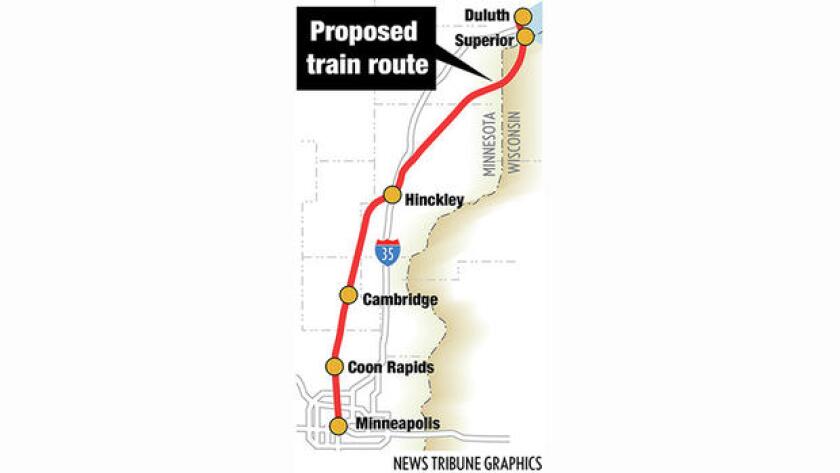ST. PAUL — A long-sought passenger rail line between Duluth and the Twin Cities still appears closer than ever to reality this year, with both the House and Senate versions of a transportation budget including funding for the service.
Advocates of the Northern Lights Express rail project, who have been pushing for years to restore Twin Cities-Duluth passenger rail travel, still say this year is the closest the state has come to funding the line. Estimates have placed the price tag of NLX at $450 million — but Minnesota would only have to chip in 20% of the total, as the federal government would pay $4 for every $1 from the state.
ADVERTISEMENT
As Democratic-Farmer-Labor majority lawmakers prepare their major budget bills, both the Senate and House transportation packages, or omnibus bills, contain funding for NLX. But there’s a key difference between the proposals: The House version calls for $194 million to get the line started, whereas the Senate version calls for $50 million.

The amount in the current Senate proposal would fall short of what’s needed to get the matching federal funds to support the full cost of NLX. Meanwhile, the $194 million would unlock nearly $1 billion, far more than the estimated cost of the project. Earlier this year, Senate and House DFLers introduced bills calling for $99 million for the line, though Minnesota tends to pass budget bills as larger packages.
NLX Alliance, a coalition of groups along the route, said legislators want to take advantage of federal passenger rail funding and called the line a key link in a Midwestern passenger rail network.
“Our NLX team continues to have conversations with legislators and leadership in both the House and Senate,” said Bob Manzoline, the executive director of the group. “We are excited about the House position, which includes full funding of the state’s 20% match."
A Senate DFL spokesman said there's a commitment in both chambers to get NLX funded, and while there's a discrepancy in funding now, it'll get hammered out later on in the session in a conference committee between the House and Senate.
Supporters of NLX are enthusiastic this year about the odds for the proposed rail line now that the DFL controls all three branches of state government. For years, the proposal never gained any traction in the divided Legislature, where Republicans opposed restoring rail travel between the Twin Cities and Twin Ports.
“We’re optimistic,” NLX Alliance spokesperson Jill Brown said in an email. “We’ve come close before. This is the year.”
ADVERTISEMENT
If funding comes, advocates say service would begin in about three years.
GOP lawmakers, including those along the route, question if the level of ridership and length of the trip would justify the expense. The Minnesota Department of Transportation estimates a trip on the NLX would take about 2½ hours and could possibly outperform drive times depending on weather and traffic. Transportation officials estimate up to 750,000 people will ride the train in the first year of service.
NLX would use 152 miles of existing BNSF Railway track and connect Target Field in downtown Minneapolis to the St. Louis County Depot in Duluth. Stops are planned in Coon Rapids, Cambridge, Hinckley and Superior.
Amtrak last operated a passenger rail route between the Twin Ports and the Twin Cities in the mid-1980s, and has agreed to run NLX if it moves forward.
Sections of track would be built alongside the main route so the passenger trains could move out of the way as freight trains move through. Passenger trains would travel about 90 mph along the route.
The Target Field stop in downtown Minneapolis would provide close access to public transit options to reach destinations across the Twin Cities, including light rail connections to downtown St. Paul and the Minneapolis-St. Paul International Airport. Supporters also say the route will provide access to the VA Medical Center in Minneapolis via light rail.
Groups backing the passenger rail line already have a plan for the project which is “shovel-ready.” BNSF has said it would not take an official stance on the project until funding is secured.
ADVERTISEMENT
Details on final funding amounts should become after lawmakers return from the legislative spring break. The last day of the session is May 22.
Follow Alex Derosier on Twitter or email aderosier@forumcomm.com .

















